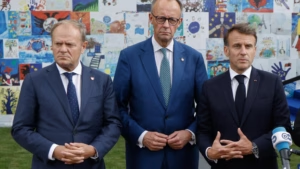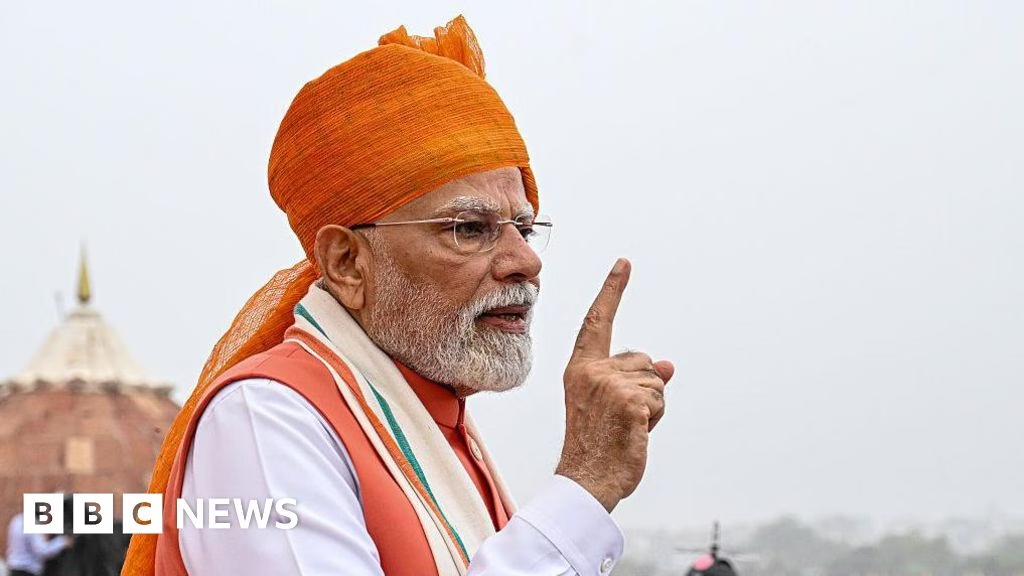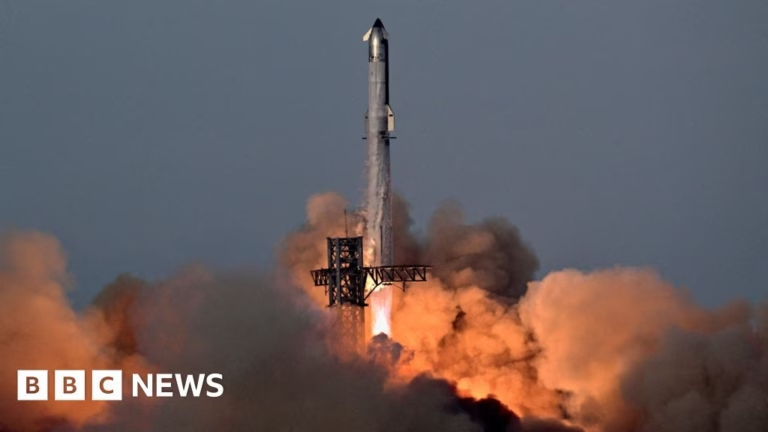(5f28ff50-81c8-11f0-b1b7-d5227004453f).webp) Bloomberg via Getty Images
Bloomberg via Getty ImagesDonald Trump’s steep 50% tariffs on India have kicked in, weeks after the US president issued an executive order hitting the Asian country with an additional 25% penalty over its purchases of Russian oil and weapons.
This makes India – one of the US’s strongest partners in the Indo-Pacific – among the countries paying the highest tariffs in the world. This could deal a blow to exports and growth in the world’s fifth largest economy, given that the US was, until recently, India’s largest trading partner.
The tariff setback has sent the Indian government into firefighting mode.
Earlier this month, Indian Prime Minister Narendra Modi made a promise.
He said that a Diwali gift in the form of a “massive tax bonanza” was on its way for the common man and the millions of small businesses that power Asia’s third largest economy.
Wearing a bright saffron turban and addressing crowds of spectators from the ramparts of Delhi’s Red Fort during Independence Day celebrations, Modi also made a rallying cry for self-reliance, urging small shop owners and businesses to put up boards of “Swadeshi” or “Made in India” outside their stores.
“We should become self-reliant – not out of desperation, but out of pride,” he said. “Economic selfishness is on the rise globally and we mustn’t sit and cry about our difficulties, we must rise above and not allow others to hold us in their clutches.”
He has since repeated these comments in at least two other public addresses this week.
For many watching, this is clearly aimed at countering US President Donald Trump’s brutal 50% tariff rate on India. This will disrupt millions of livelihoods across the country’s export-driven industries that supply everything from clothes to diamonds and shrimp to American consumers.
Amid the blow, Modi’s message to his countrymen has been loud and clear – make in India and spend in India.
The former has proved increasingly difficult, with the share of manufacturing as part of India’s gross domestic product (GDP) stagnating at 15% levels, despite his government rolling out subsidies and production incentives over the years.
But spurring long-pending tax reforms that immediately put more money into the hands of people could help the government soften some of the blow, experts say.
And so, after a $12bn income tax giveaway announced in the budget earlier this year, Modi is now aiming for an overhaul of India’s indirect tax architecture – a reduction and simplification of the goods & service tax (GST).
/live(5f28ff50-81c8-11f0-b1b7-d5227004453f).webp) AFP via Getty Images
AFP via Getty Images





.webp)



